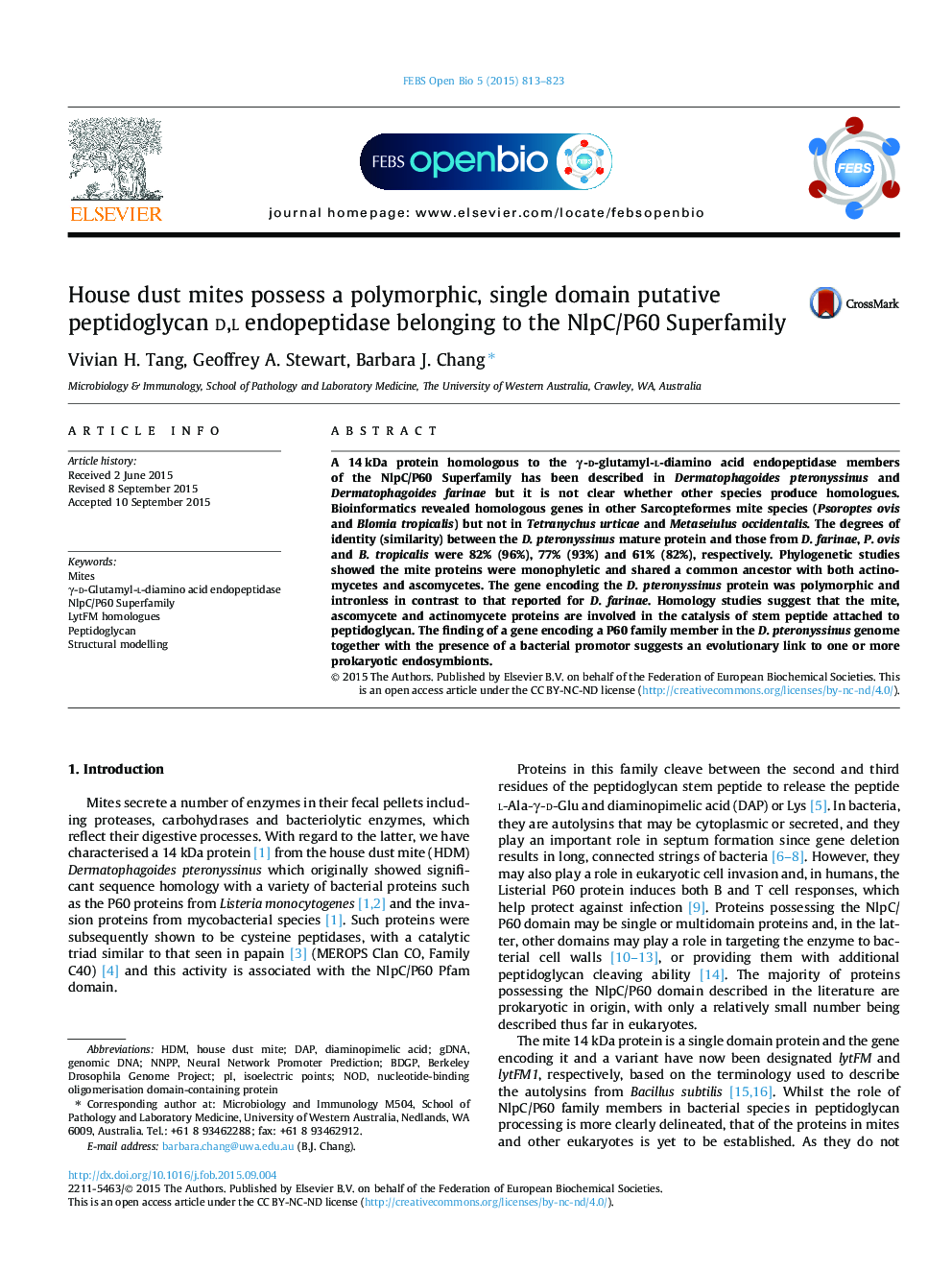| کد مقاله | کد نشریه | سال انتشار | مقاله انگلیسی | نسخه تمام متن |
|---|---|---|---|---|
| 1981648 | 1539419 | 2015 | 11 صفحه PDF | دانلود رایگان |

• A NlpC/P60 dipeptidyl-peptidase (LytFM) was found in Sarcopteformes mites.
• The mite proteins are monophyletic, sharing an ancestor with actinomycetes and ascomycetes.
• D. pteronyssinus lytFM is polymorphic and intronless in contrast to the gene in D. farinae.
• Mite LytFM homologues are single domain proteins.
• Possible lateral lytFM transfer between mites and their bacterial endosymbionts.
A 14 kDa protein homologous to the γ-d-glutamyl-l-diamino acid endopeptidase members of the NlpC/P60 Superfamily has been described in Dermatophagoides pteronyssinus and Dermatophagoides farinae but it is not clear whether other species produce homologues. Bioinformatics revealed homologous genes in other Sarcopteformes mite species (Psoroptes ovis and Blomia tropicalis) but not in Tetranychus urticae and Metaseiulus occidentalis. The degrees of identity (similarity) between the D. pteronyssinus mature protein and those from D. farinae, P. ovis and B. tropicalis were 82% (96%), 77% (93%) and 61% (82%), respectively. Phylogenetic studies showed the mite proteins were monophyletic and shared a common ancestor with both actinomycetes and ascomycetes. The gene encoding the D. pteronyssinus protein was polymorphic and intronless in contrast to that reported for D. farinae. Homology studies suggest that the mite, ascomycete and actinomycete proteins are involved in the catalysis of stem peptide attached to peptidoglycan. The finding of a gene encoding a P60 family member in the D. pteronyssinus genome together with the presence of a bacterial promotor suggests an evolutionary link to one or more prokaryotic endosymbionts.
Journal: FEBS Open Bio - Volume 5, 2015, Pages 813–823